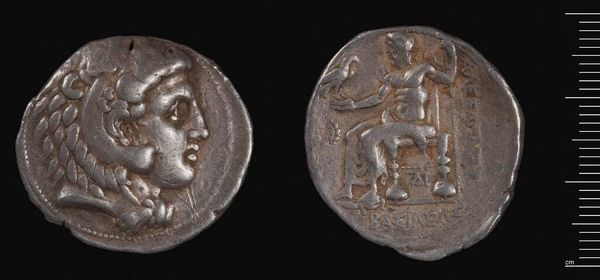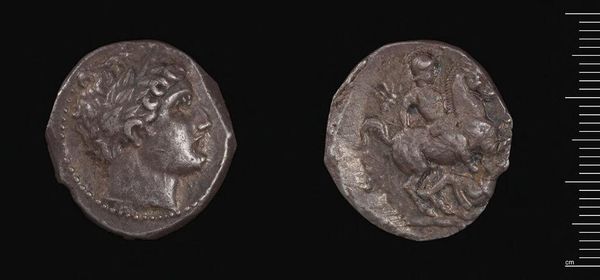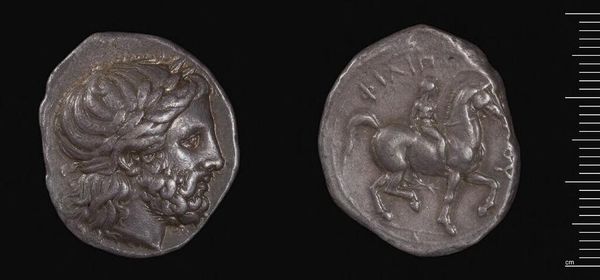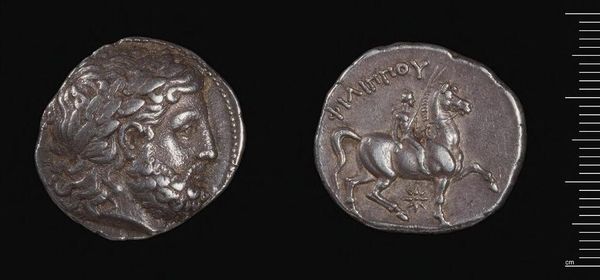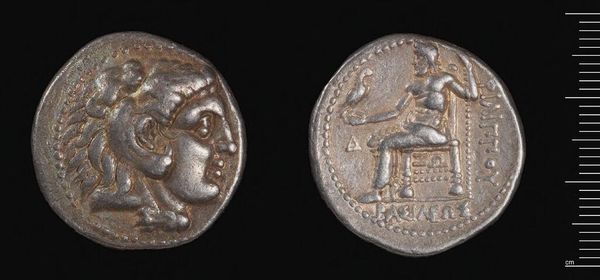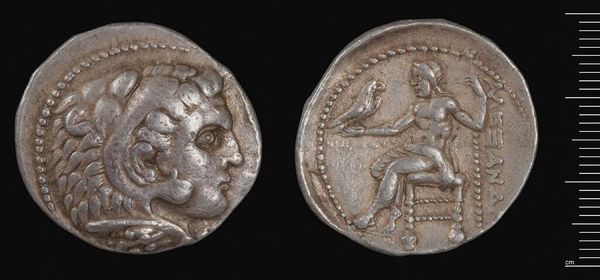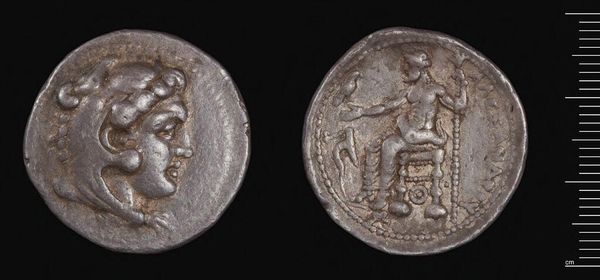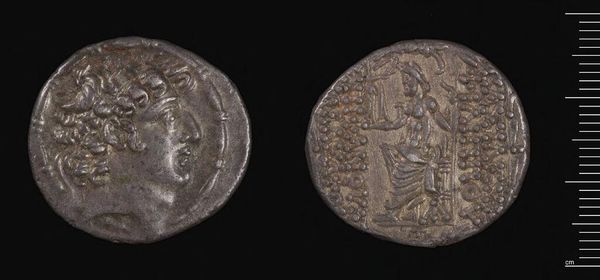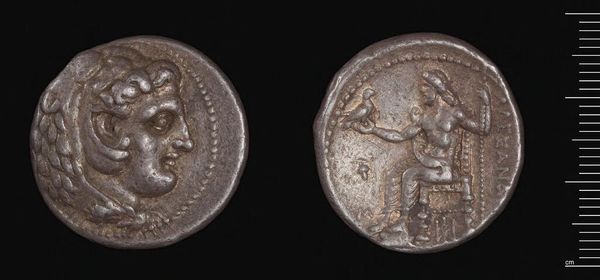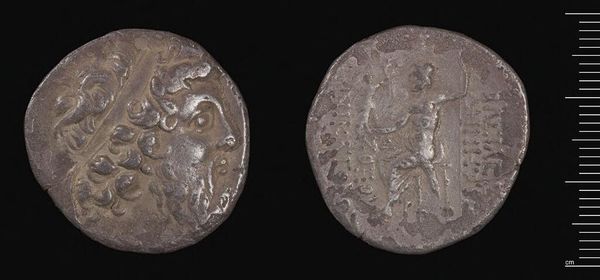
Dimensions: 17.22 g
Copyright: CC0 1.0
Curator: This is a tetradrachm of Seleucus I, minted in Seleuceia on the Tigris. The silver content alone speaks volumes about the economic strategies employed. Editor: My eye is immediately drawn to the figure enthroned on the reverse. What power dynamics are encoded in that image? Curator: The material itself, silver, was a powerful statement. Its controlled extraction and minting reinforced Seleucus's authority. It was a tool of governance. Editor: Absolutely, and the seated figure, often interpreted as Zeus, is laden with symbolism. The eagle, the scepter...symbols of authority and divine favor. Curator: Consider the labor involved in extracting and refining the silver. These coins represent a massive mobilization of resources and human effort. Editor: Indeed, and this imagery would have resonated deeply. Seleucus was deliberately associating himself with established deities and concepts of kingship. Curator: And while that imagery helped, the coin also served as a unit of value. It facilitated trade, paid soldiers—fueled the Seleucid war machine. Editor: Right. The tetradrachm functions as a microcosm of Seleucid power, a testament to the enduring legacy of symbolism in forging identity. Curator: Seeing the work through the lens of its production gives so much insight to the dynamics of exchange in the ancient world. Editor: And studying those embedded images helps me imagine the past and how people navigated their beliefs.
Comments
No comments
Be the first to comment and join the conversation on the ultimate creative platform.
